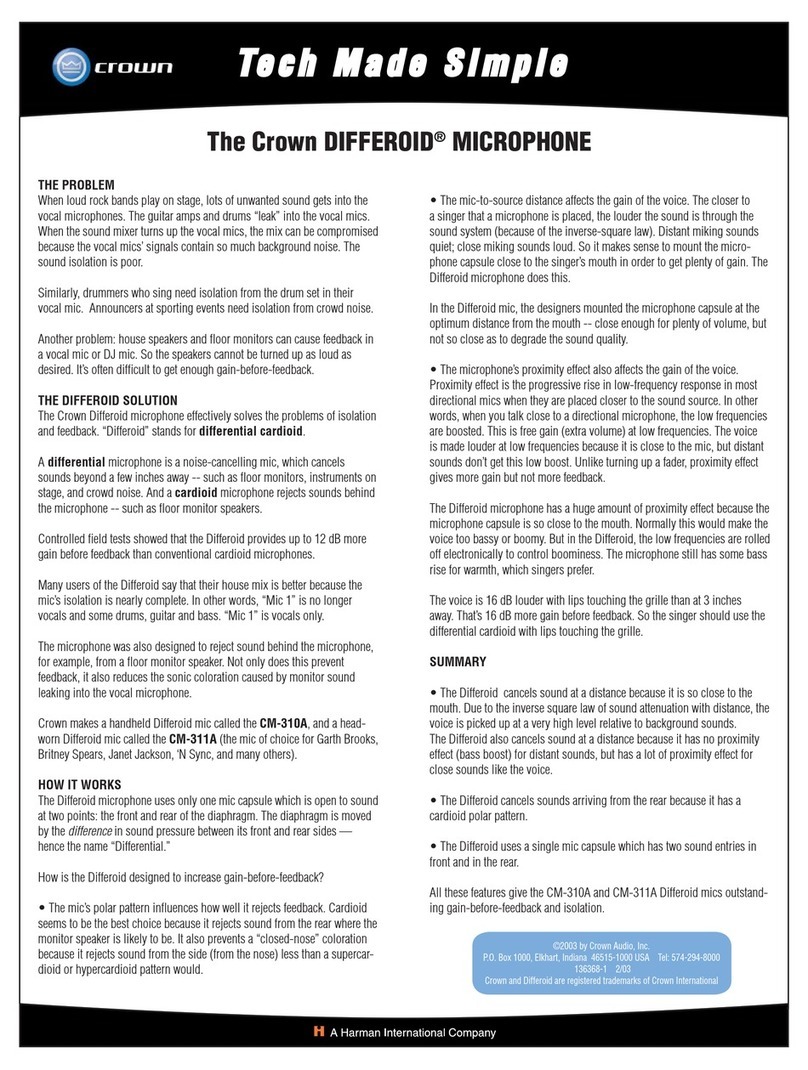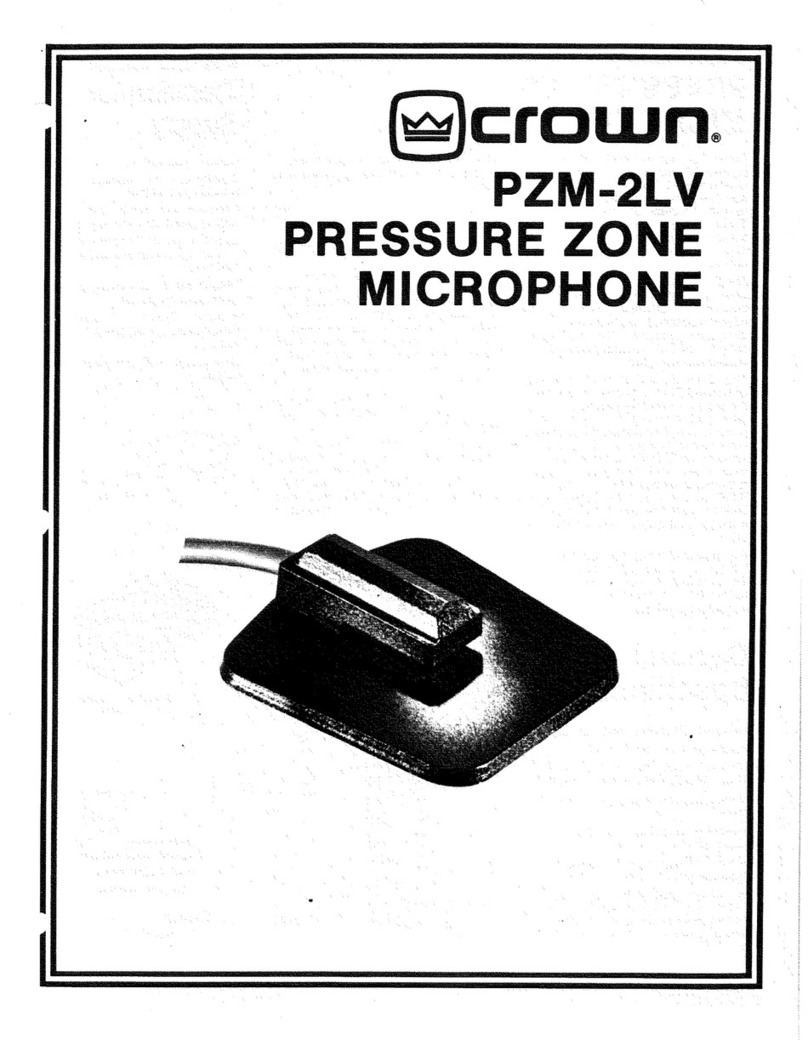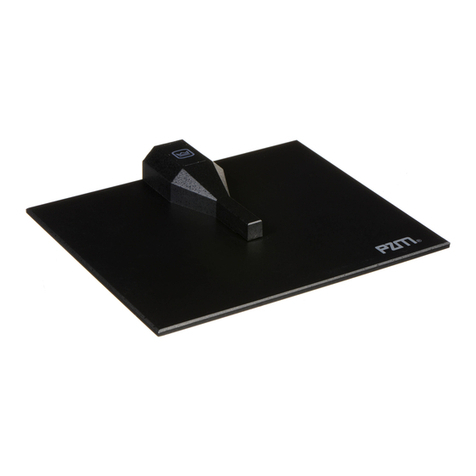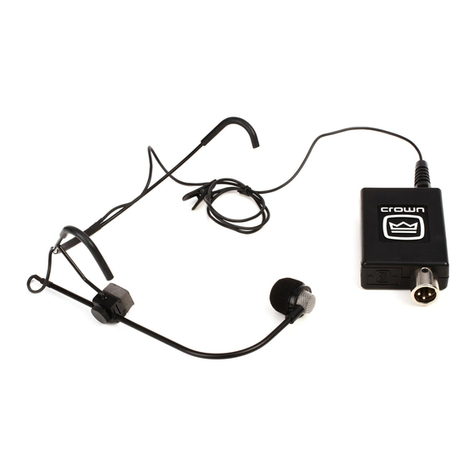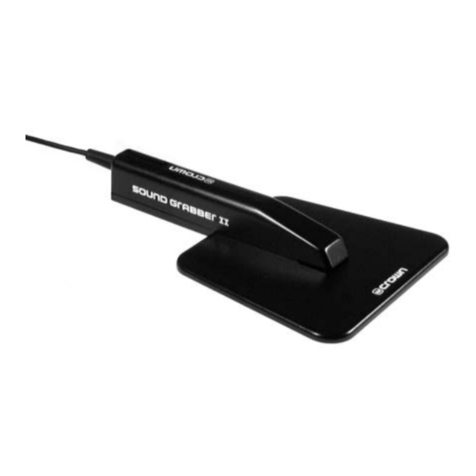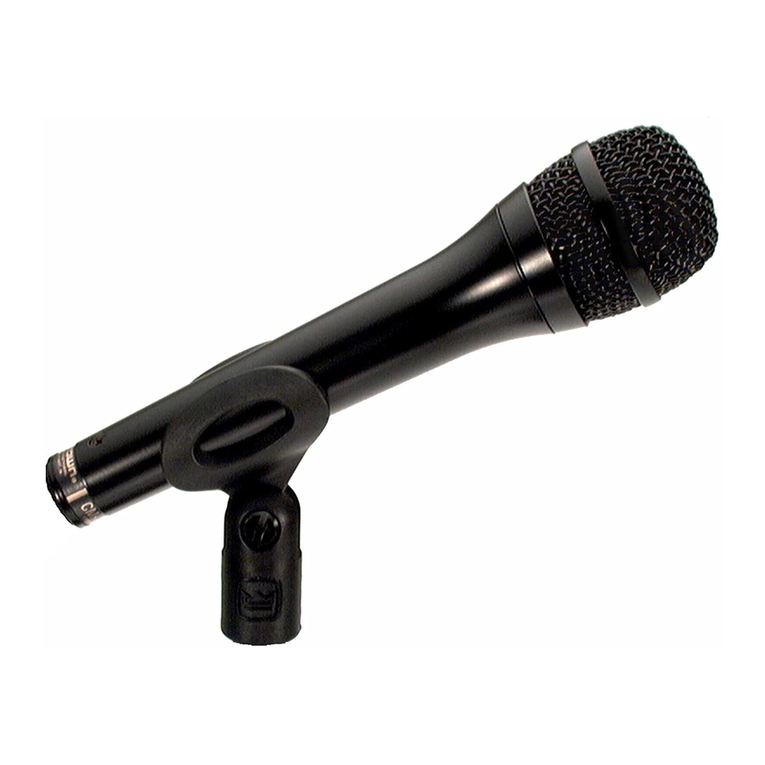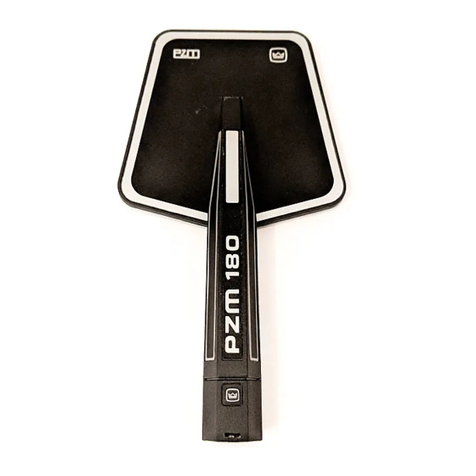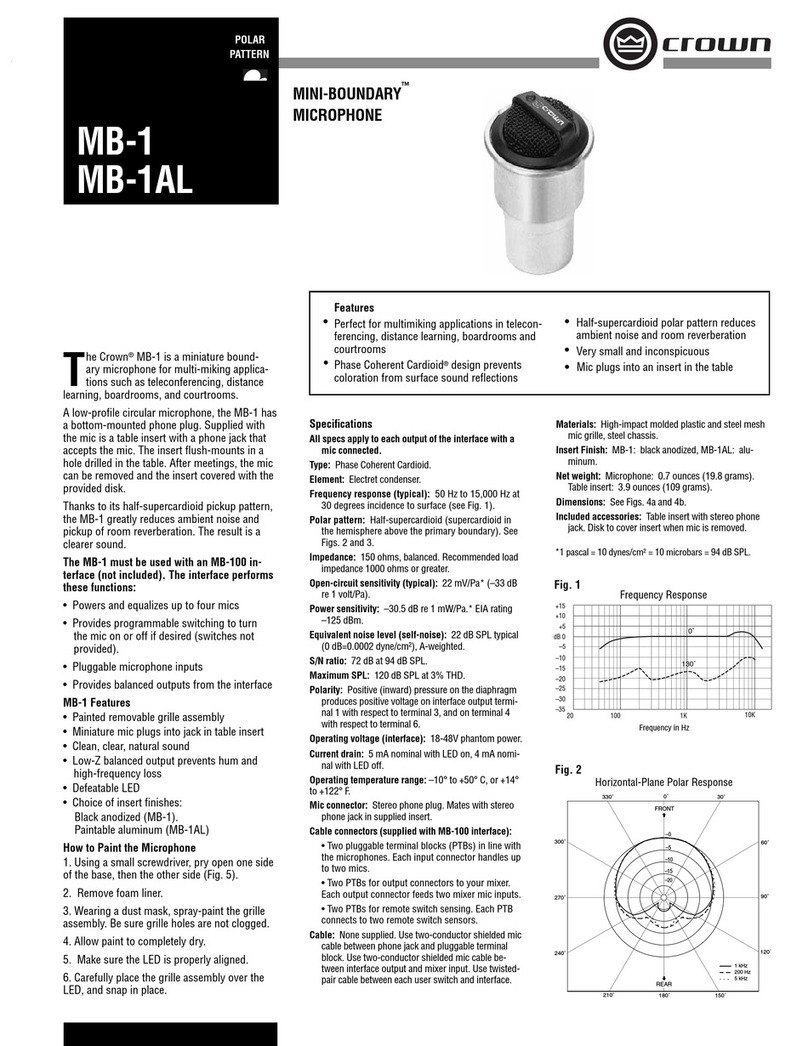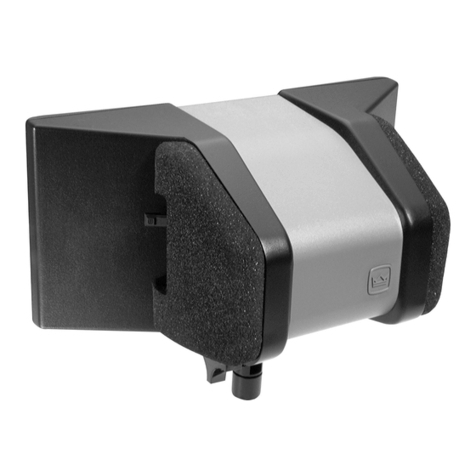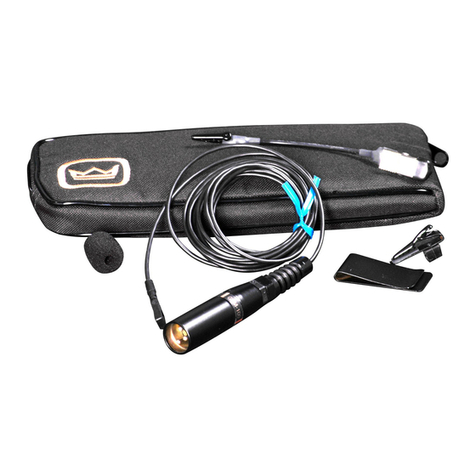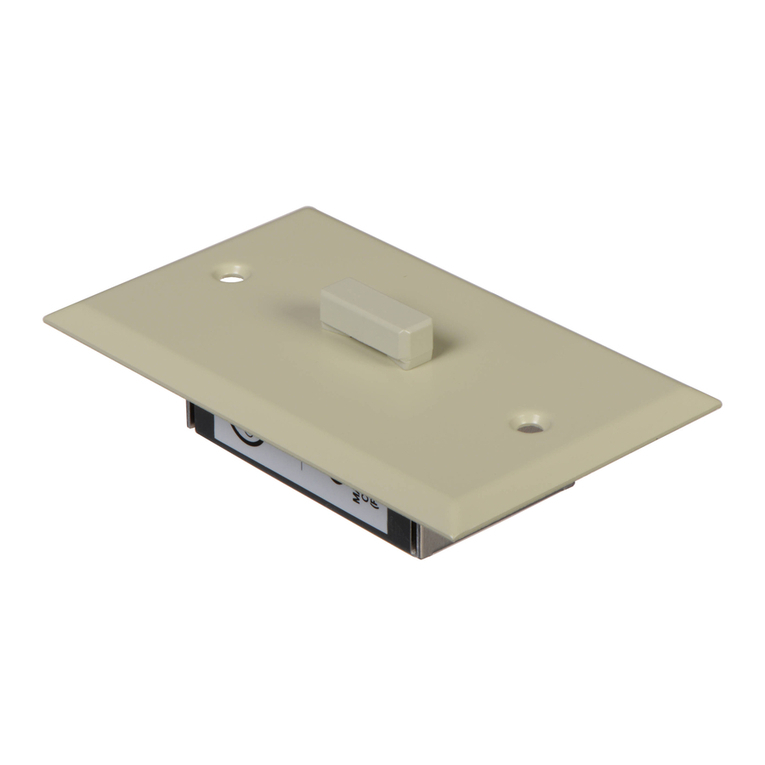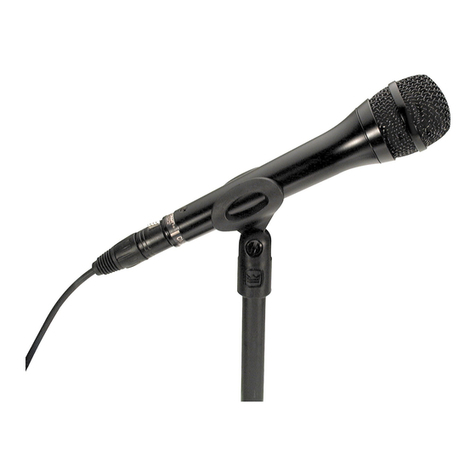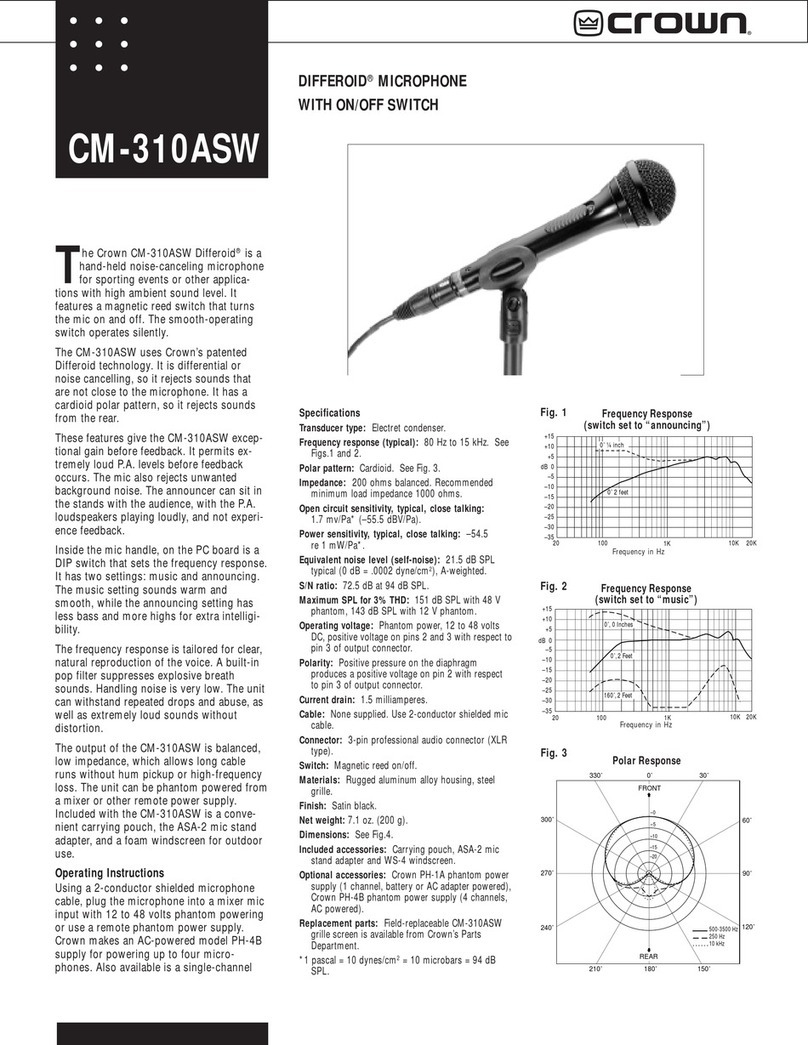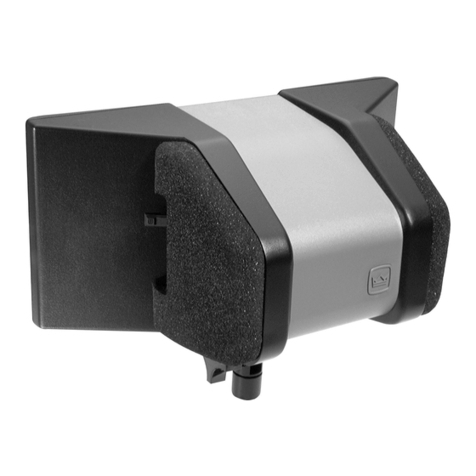
vibrations,butitdoeshearfootstepsacoustically,like
yourears.Normallythis isnotaproblembecausethe
audienceseesandhearstheactorswalkingacrossthe
stage.
ThePCC-160picksupsoundfromthefront,butitrejects
soundfromtherear.Thatis,itpicksuptheactors,butnot
muchofthepitorchestraorP.A.speakers.Also,thePCC-
160rejectsfeedback.ItwillfeedbackifthePAistooloud,
likeanymic,butyoucanturnituplouderwithout
feedbackthanmostothermics.
Tofurtherrejectthepitorchestra,placethePCC-160in
asmallL-shapedcornermadeofthin cardboard
(Figure2).Orlayapadofacoustic foamonthefloor
behindthemicrophone(2"to4"thickby1foot
square).
Inuse,thePCC-160is nearlyinvisible,soit doesnot
distractfromtheset.Itreducesstagefright.Young
actorstalkmorenaturallybecausethey’renottalking
intoamicrophone.
How doyouusethem?Typicallyyouevenlyspacethree
PCC’sneartheedgeofthestage(Figure3).Placethem
ascloseaspossibletowardtheactors.OneortwoPCCs
mightbeenoughforasmallstage.
Themoremicsthatareon,themuddierthesound,and
themorefeedbackyouwillhave.Toaidclarityand
reducefeedback,turnupasfew micsaspossible.For
example,supposeanactorwalksacrossthestagefrom
lefttorightwhiletalking.Firstturnupjusttheleftmic,
thenturnitdownwhileturningupthecentermic.
Thenturnit downwhileturninguptherightmic.
Follow cuesin thescriptsoyouknow whentoturnup
variousmicrophones.
Whenyoudosoundreinforcementforspeech,you
wantthesoundtobeclear,natural,andloudenoughfor
everyonetohear.High-qualitymicrophoneswillhelp
youreachthis goal.Inthis guide,we’lloffermikingtips
forfiveapplicationsinspeechreinforcement:stage,
lectern,conference,courtroom,andathleticevents.
We’llsuggestwhichmicrophoneis bestforthejob,and
wheretoplaceit.
Whenyouputtogetherasoundsystem,onegoalisto
minimizefeedback.This isthesquealingsoundyou
hearwhenthemicspickuptheP.A.speakers.Most
Crownmicrophonesaredesignedtorejectfeedback,
soyoucanturnthemuploudenoughforeveryoneto
hear.
Also,Crownmicsaredesignedforclear,cleansound
sothatspeechwillbeeasytounderstand.Crownmics
soundnaturalandtrue-to-life,ratherthan“canned”or
muffled.
Besidesgoodmics,it’simportanttousehigh-quality
speakers.Placethemasclosetotheaudienceasis
practical,aimingattheaudience.Nomic soundsgood
throughapoorlylocatedspeakersystem.
Let’slookatavarietyofaudiosetups.Ineachcase,we’ll
suggesthow tochoosetherightmic andhow touseit
effectively.
THEATERSTAGE
Playsandmusicalsin anauditoriumarearealchallenge
topickupandamplifywell.First,trytosolvethe
problematitssource.Thedirectorshouldaskthe
performerstospeakloudlyandclearly.Ifthemusic
drownsouttheactors,youmighttactfullyaskthe
musicaldirectortohavethepitorchestraplaymore
quietly.
Goodmicrophonescanhelp,too.Threetypesof
microphonesforstagemikingarefloormics,hanging
mics,andminiaturewirelessmics.
FloorMics
The Crown PCC-160 is a stage-floor microphone for
mikingdrama (Figure 1).Youplace it on thestage floor,
near the footlights.It’s the industry-standard stage mic
onBroadway,and has beenextensively field-tested in
schools.
The PCC-160 sounds clear and natural,and can be
turned uploud enoughfor everyone to hear the
performance and understand the words.It’s rugged
enough to withstand kicksby dancersand can be
stepped on withoutdamage.
You might wonder if the mic picks upfootsteps,since
it’s on the floor.The PCC-160 is not sensitive to floor
Figure 1 – PCC-160 supercardioid surface-mount microphone.
Figure 2 – Two methods to improve rear rejection of PCC-160.

